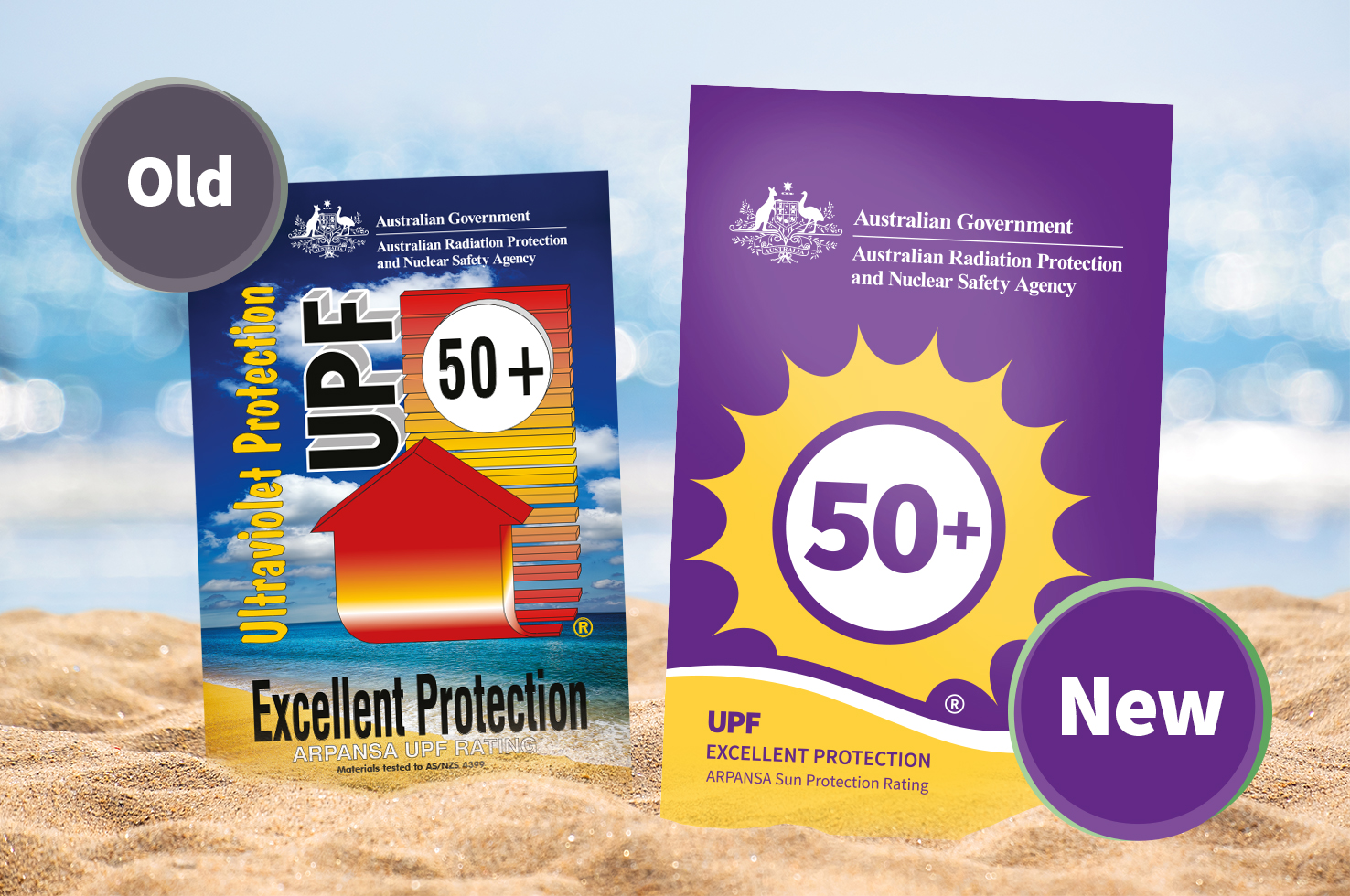New look for sun safe labels

Covering up with sun protective clothing is one of five ways Australians can protect themselves from the harmful effects of ultraviolet (UV) radiation. But not all fabrics provide the same level of protection.
ARPANSA’s UV laboratory tests clothing materials to determine a UV protection factor (UPF) rating which consumers can find on labels, or swing tags, attached to garments, hats, and other clothing accessories.
‘We’re launching our new-look swing tag to provide the Australian public with access to a simple, reliable indicator of the level of sun protection provided by clothing materials tested by ARPANSA’ said Lydia Tjong, Assistant Director, Ultraviolet Radiation Services at ARPANSA.
‘The new design is much cleaner, making it easy to see at a glance the level of protection provided.’
With two in three Australians diagnosed with skin cancer by the age of 70, prevention is more important than ever.
Clothing is one of the 5 sun protection methods, which should all be used together where possible:
- slip on sun-protective clothing that covers as much skin as possible
- slop on broad spectrum, water resistant SPF30 or higher sunscreen. Put it on 20 minutes before you go outdoors and every two hours afterwards
- slap on a hat – broad brim, bucket or legionnaire style to protect your face, head, neck and ears
- seek shade from the sun wherever possible
- slide on some quality sunglasses – make sure they meet Australian Standards.
Consumers should start to see the new purple and yellow swing tags in stores over the coming months.
Find out more: Sun protection using clothing


